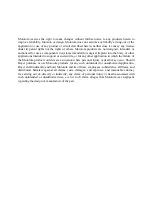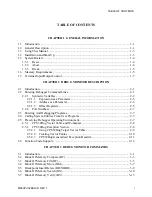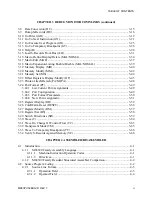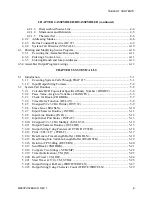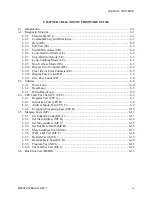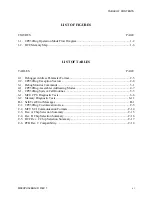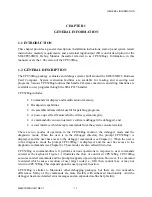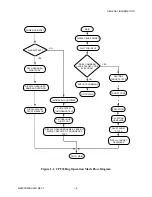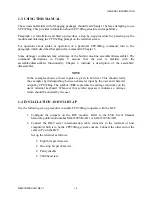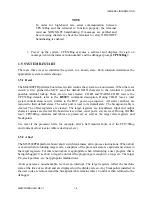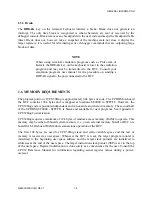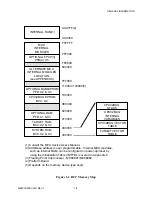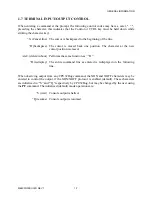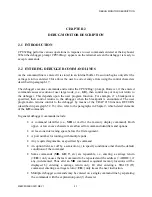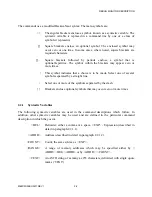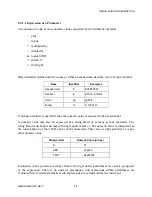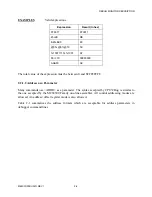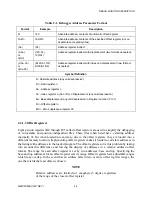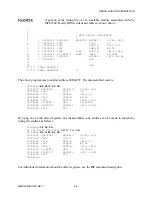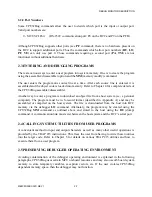
GENERAL INFORMATION
M68CPU32BUG/D REV 1
1-1
CHAPTER 1
GENERAL INFORMATION
1.1 INTRODUCTION
This chapter provides a general description, installation instructions, start-up and system restart
instructions, memory requirements, and a terminal input/output (I/O) control description for the
M68CPU32BUG Debug Monitor (hereafter referred to as CPU32Bug). Information in this
manual covers the 1.00 version of the CPU32Bug.
1.2 GENERAL DESCRIPTION
The CPU32Bug package evaluates and debugs systems built around the M6833XBCC Business
Card Computer. System evaluation facilities are available for loading and executing user
programs. Various CPU32Bug routines that handle I/O, data conversion, and string functions are
available to user programs through the TRAP #15 handler.
CPU32Bug includes:
•
Commands for display and modification of memory,
•
Breakpoint capabilities,
•
An assembler/disassembler useful for patching programs,
•
A power-up self test feature which verifies system integrity,
•
A command-driven user-interactive software debugger (the debugger), and
•
A user interface which accepts commands from the system console terminal.
There are two modes of operation in the CPU32Bug monitor; the debugger mode and the
diagnostic mode. When the user is in the debugger directory the prompt CPU32Bug> is
displayed, and the user has access to the debugger commands (see Chapter 3). When the user is
in the diagnostic mode the prompt CPU32Diag> is displayed, and the user has access to the
diagnostic commands (see Chapter 6). These modes are also called directories.
CPU32Bug is command-driven. It performs various operations in response to user commands
entered at the keyboard. Figure 1-1 illustrates the flow of control in CPU32Bug. CPU32Bug
executes entered commands and the prompt reappears upon completion. However, if a command
is entered which causes execution of user target code (i.e., GO) then control may or may not
return to CPU32Bug. This depends upon the user program function.
CPU32Bug is similar to Motorola’s other debugging packages, but there are two noticeable
differences. Many of the commands are more flexible with enhanced functionality. And the
debugger has more detailed error messages and an expanded on-line help facility.
Содержание M68CPU32BUG
Страница 16: ...GENERAL INFORMATION M68CPU32BUG D REV 1 1 8 ...
Страница 30: ...DEBUG MONITOR DESCRIPTION M68CPU32BUG D REV 1 2 14 ...
Страница 102: ...DEBUG MONITOR COMMANDS M68CPU32BUG D REV 1 3 72 ...
Страница 168: ...DIAGNOSTIC FIRMWARE GUIDE M68CPU32BUG D REV 1 6 24 ...


